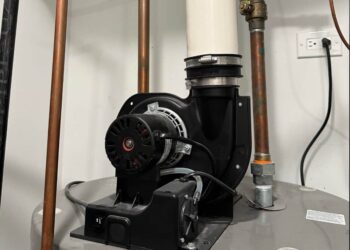Relocating a vehicle, whether it’s across cities or international borders, can be a complex process that requires careful planning and attention to detail. Ensuring your car arrives safely at its destination, free from damage or complications, involves more than simply hiring a transport service. With the right preparation, you can minimise risks and make the entire process stress-free.
In this guide, we’ll provide the ultimate checklist for safely relocating your vehicle, from the initial planning stages to the moment your car reaches its destination. Whether you’re moving domestically or dealing with car shipping Japan to Australia, this checklist will help you cover all bases and ensure a smooth relocation.
1. Choose the Right Car Transport Service
The first and most crucial step in relocating your vehicle is selecting the right car transport service. There are different methods of car transport available, depending on factors such as distance, vehicle type, and budget. Here are some options to consider:
- Open Car Transport: This is one of the most common and cost-effective methods. Your car will be transported on an open trailer, often along with other vehicles. However, it leaves your vehicle exposed to the elements.
- Enclosed Car Transport: For high-end, classic, or luxury vehicles, enclosed transport is a better option as it offers full protection from weather and road debris. While more expensive, it provides peace of mind for those transporting valuable cars.
- International Shipping (Container or RoRo): If you’re shipping your car overseas, you’ll need to decide between container shipping and Roll-On, Roll-Off (RoRo) transport. Container shipping offers more protection, while RoRo is more affordable but leaves the vehicle more exposed.
When researching companies, look for a reliable provider with strong customer reviews, adequate insurance coverage, and a track record of safe vehicle relocations.
2. Verify Insurance Coverage
One of the most critical aspects of vehicle relocation is making sure your car is insured for the journey. Before selecting a transport service, verify their insurance policy to understand what is covered during transit. Most reputable services will have insurance that covers damages that may occur during the move.
However, it’s also a good idea to check with your personal car insurance provider to see if your existing policy covers vehicle transport or if you need to purchase additional coverage. In the rare case of damage, you’ll want to have comprehensive coverage to avoid costly repairs.
3. Prepare Your Vehicle for Transport
Preparing your car properly before relocation is vital to ensure its safety during transport. Follow these steps to get your vehicle ready:
a. Clean Your Car Inside and Out
Washing your car before transport isn’t just about appearance; it’s a practical step to help you identify any pre-existing scratches, dents, or damages. A clean vehicle allows you to perform a thorough inspection and document its condition accurately.
b. Remove Personal Items
Transport services typically advise removing all personal items from your vehicle. Items left inside can move around during transit, potentially causing damage to the interior. Additionally, most transport companies won’t cover personal items in their insurance policies.
c. Check for Leaks and Mechanical Issues
Ensure your car is in good working order before transport. Check the fluid levels, tyre pressure, and battery to confirm they are in optimal condition. If there are any mechanical issues, such as leaks or battery problems, inform the transport company in advance, as some issues could affect the transport process.
d. Disable Alarm Systems
If your car is equipped with an alarm system, it’s best to disable it before transport. Alarms can be triggered during transit, causing unnecessary disruptions and potential battery drainage.
4. Document Your Vehicle’s Condition
Before handing your vehicle over to the transport company, conduct a thorough inspection of its current condition. Take detailed photos from all angles, paying attention to any existing scratches, dents, or other damage. Make a note of the mileage as well. This documentation will be crucial if any damage occurs during transport and you need to file a claim with the transport company or your insurance provider.
When you hand your vehicle over, the transport company should also perform an inspection and provide you with a bill of lading. This document serves as a receipt and contract for the transport, and it will include a description of the car’s condition at the time of pickup.
5. Understand the Timeline and Delivery Process
It’s important to clarify the timeline for your vehicle’s relocation with the transport company. Depending on the distance and method of transport, delivery times can vary significantly. For example, domestic relocations might take a few days, while international shipping (such as car shipping Japan to Australia) can take several weeks.
Ensure that you understand the expected delivery window and what steps to take if there are delays. Ask the company if they provide tracking services so you can monitor your vehicle’s location throughout the journey.
6. Prepare for Pickup and Delivery
On the day your vehicle is picked up, ensure you are present or have a designated person available to meet the driver. You’ll need to review the inspection report and sign off on the condition of the car.
Likewise, when your car is delivered, inspect it carefully before signing off on its receipt. Compare the car’s current condition to the photos and documentation you took before transport. If there is any damage, make sure to note it on the bill of lading and contact the transport company immediately.
7. Ensure Compliance with Local Laws
For international vehicle relocations, understanding the legal requirements of the destination country is crucial. This includes compliance with customs regulations, import taxes, and safety standards. For example, when car shipping Japan to Australia, there are specific import laws to follow, such as ensuring the car meets Australian vehicle safety standards and completing the necessary paperwork for customs clearance.
Research the rules and regulations in advance or consult with your transport provider to make sure you are prepared for the administrative side of vehicle relocation.
8. Stay Flexible and Be Patient
Vehicle transport can sometimes face unexpected delays, such as weather disruptions or logistical issues. While it can be frustrating, staying flexible and maintaining communication with your transport provider can make the process smoother. Make sure you’ve planned ahead and allowed some buffer time in case your vehicle takes longer than expected to arrive.
9. Check the Car Upon Delivery
Once your vehicle has arrived at its destination, the final step is to carefully inspect it to ensure everything is as expected. Compare the car’s condition to your pre-transport photos and make sure there are no new damages. If you spot any issues, note them immediately on the bill of lading and inform the transport company.
If everything is in order, sign off on the delivery and enjoy the peace of mind knowing your vehicle has been safely relocated.
Safe and Stress-Free Vehicle Relocation
Moving a vehicle, whether domestically or internationally, doesn’t have to be a stressful experience. By following this ultimate checklist, you can ensure that every step of the process is handled with care and attention to detail. From selecting the right transport method to inspecting your car on delivery, each stage of vehicle relocation is crucial to ensuring a safe and successful move. By being prepared and staying informed, you’ll have the confidence that your car will arrive safely at its destination, no matter how far it has to travel.





